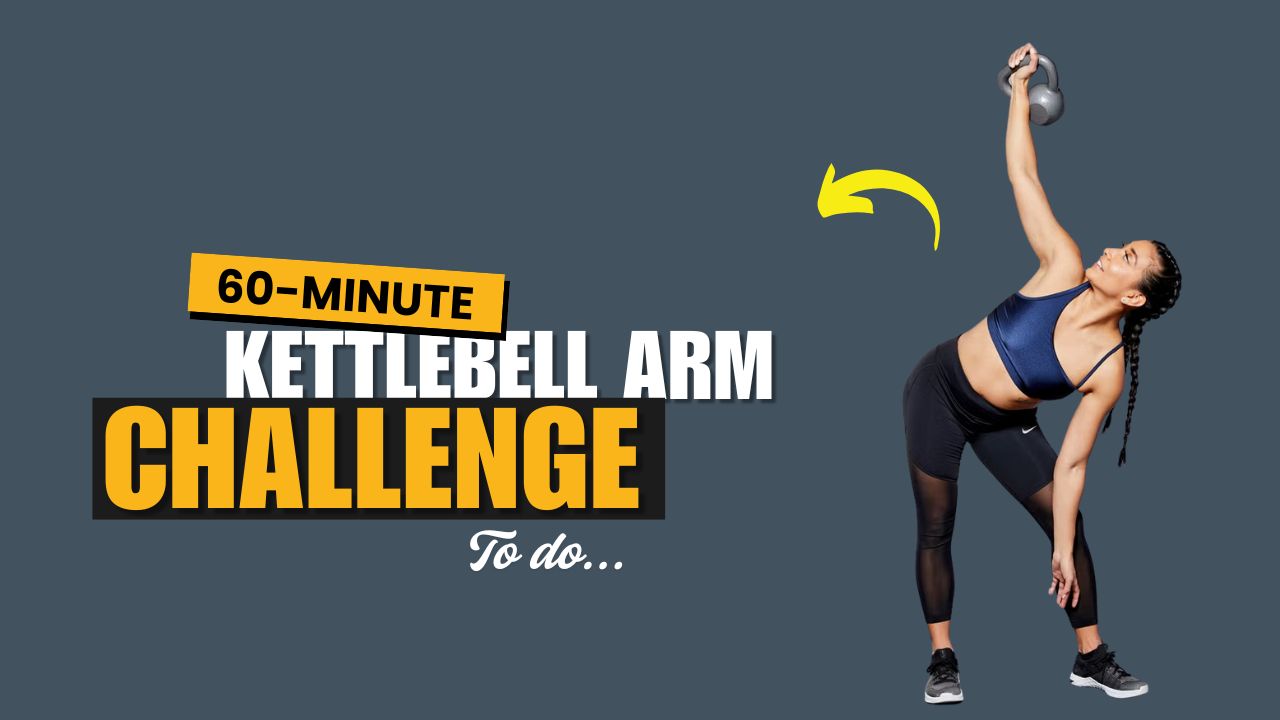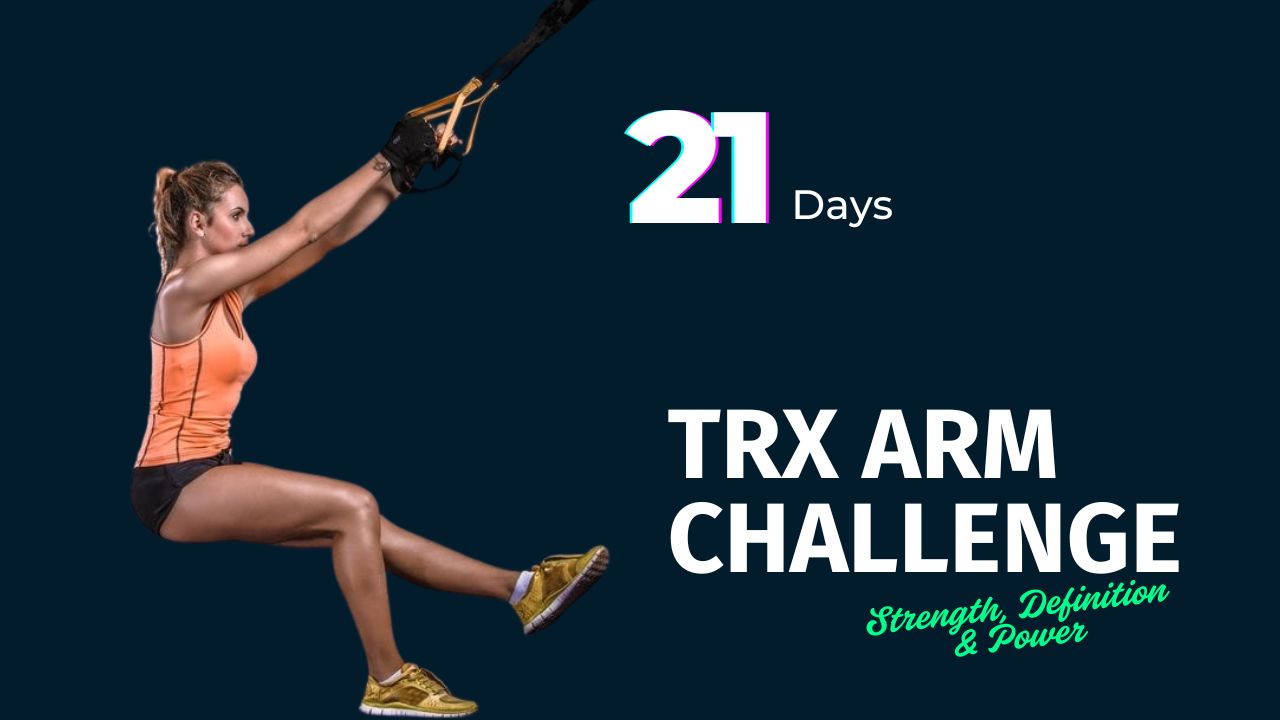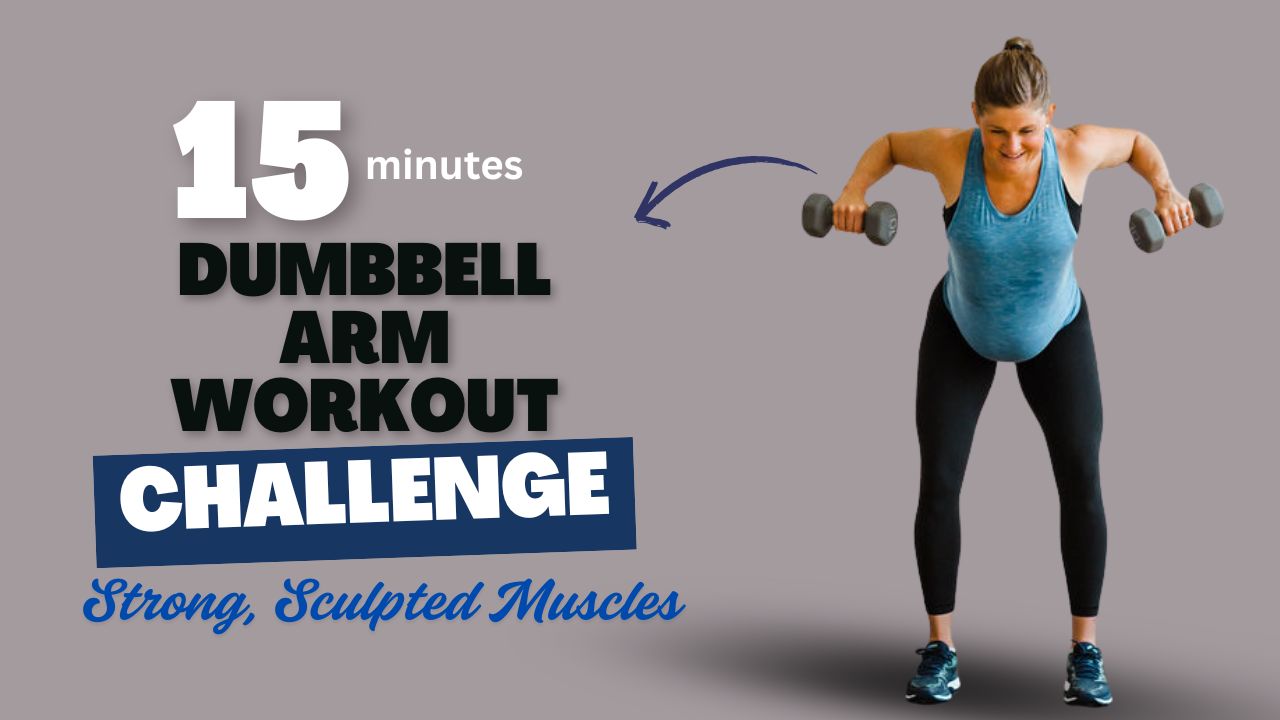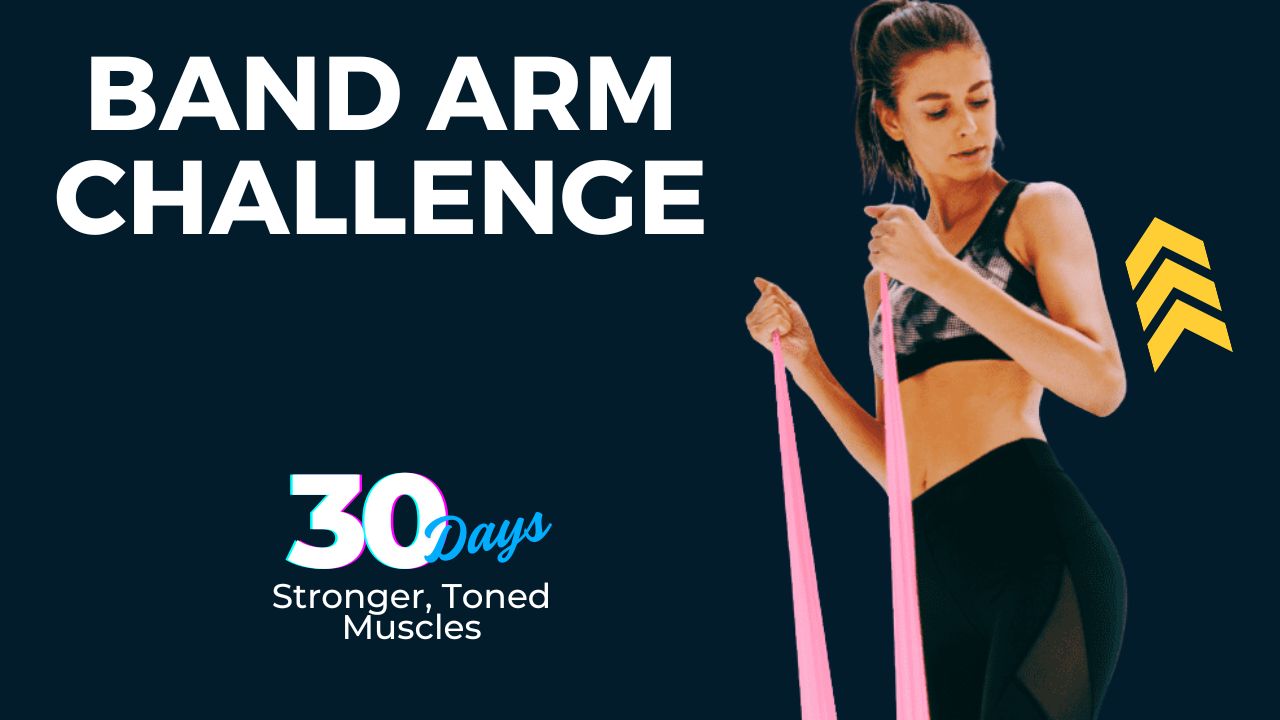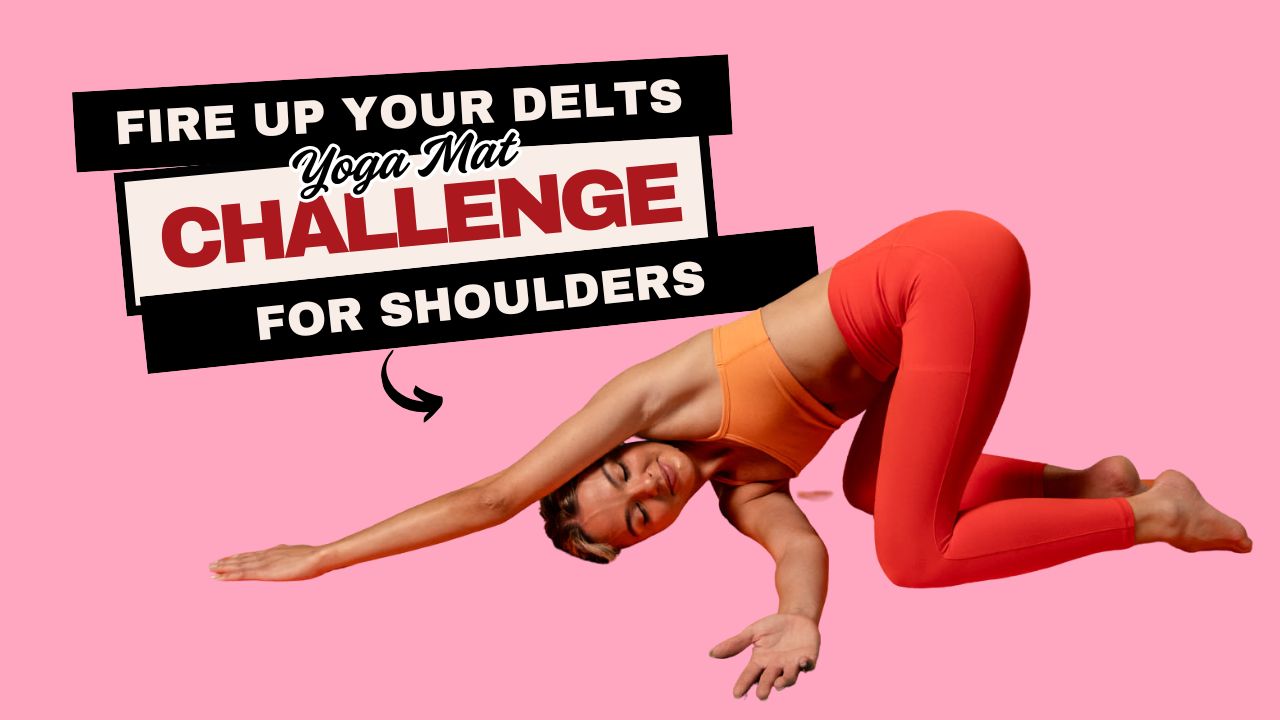What if I told you that in just 21 days, you could transform your arm strength, definition, and overall upper-body power without lifting a single dumbbell or barbell?
That’s the magic of the TRX Suspension Trainer — a piece of equipment originally developed by a Navy SEAL to stay combat-ready anywhere in the world.
Today, it’s used by elite athletes, fitness enthusiasts, and beginners alike to build serious muscle tone using nothing but your body weight.
In this 21-Day TRX Arm Challenge Circuit, you’ll target every major muscle in your arms — biceps, triceps, forearms, shoulders, and even the stabilizing muscles in your core — to deliver functional strength, improved muscle endurance, and a sculpted look.
Each workout combines strength-building moves with stability training, forcing your muscles to engage deeper and work harder.
Do you know? Studies show that suspension training recruits up to 30% more muscle fibers compared to traditional resistance exercises, thanks to the instability factor.
Let’s dive into the exercises that will power your 3-week arm transformation.
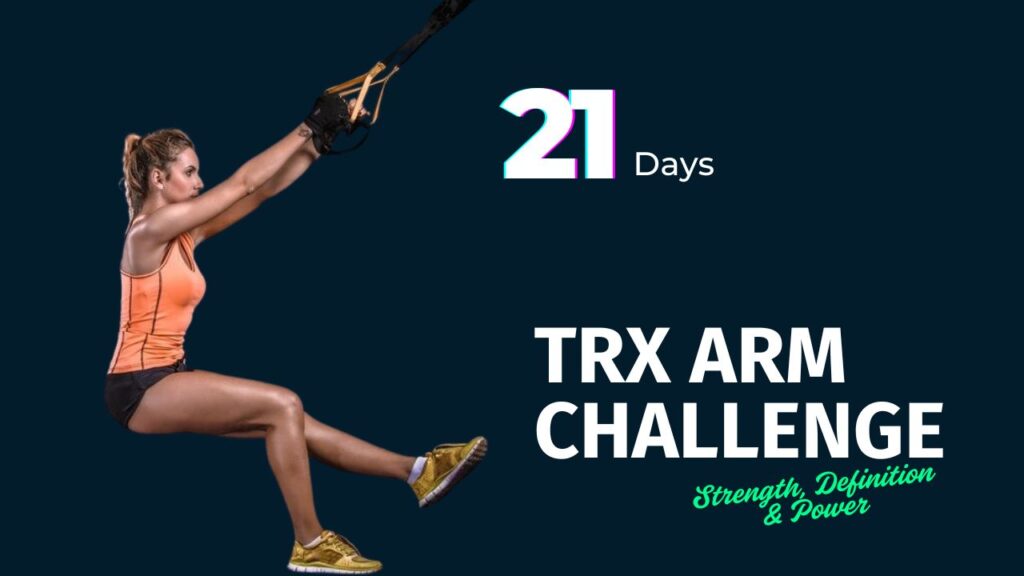
Table of Contents
What Can Happen After 30 Days of the 21-Day TRX Arm Challenge
| Physical Changes | Performance & Strength Gains | Other Benefits |
|---|---|---|
| Noticeably toned and defined biceps and triceps | Increased arm and shoulder strength | Improved posture and shoulder stability |
| Leaner arms with reduced fat around the arms | Enhanced muscular endurance | Boosted metabolism due to consistent resistance training |
| Improved grip strength and forearm definition | Better control in pushing and pulling movements | Increased overall confidence and motivation to train |
| Stronger stabilizing muscles in the shoulders and core | Ability to perform more reps with proper form | Reduced risk of arm, shoulder, and back injuries |
| Slight improvement in upper chest definition | Improved mind-muscle connection | Higher energy levels and better daily functional fitness |
| More balanced muscular symmetry in upper body | Greater range of motion and flexibility | Enhanced body awareness and coordination |
Do’s & Don’ts for the 21-Day TRX Arm Challenge
| Do’s | Don’ts |
|---|---|
| Maintain proper form for every exercise to avoid injury. | Don’t rush through reps just to finish faster. |
| Engage your core throughout each movement. | Don’t let your hips sag or arch your back. |
| Adjust your body angle to modify difficulty. | Don’t perform exercises with straps that are too loose or unstable. |
| Warm up for 5–10 minutes before starting the circuit. | Don’t skip rest days — muscles need recovery to grow. |
| Focus on controlled movements, especially during lowering phases. | Don’t lock your elbows or swing your body unnecessarily. |
| Hydrate properly before, during, and after the workout. | Don’t ignore pain — mild soreness is normal, sharp pain is not. |
| Increase intensity gradually over the 21 days. | Don’t sacrifice technique for heavier resistance or harder angles. |
| Incorporate stretching or mobility work post-workout. | Don’t neglect other muscle groups — balance upper-body workouts with full-body training. |
| Track your reps, sets, and progress to stay motivated. | Don’t compare your performance to others — progress is personal. |
| Listen to your body and adjust as needed. | Don’t skip warm-up or cool-down — it increases risk of injury. |
TRX Arm Challenge Exercises To Do
1. TRX Bicep Curl
Description:
The TRX Bicep Curl isolates your biceps while engaging your core and shoulders for stability. Unlike standard curls, the TRX forces you to maintain constant tension, increasing time under tension for faster muscle growth.
How to:
- Adjust your TRX straps to mid-length.
- Stand facing the anchor point, holding the handles with palms facing up.
- Lean back slightly so your body forms a straight line from head to heels, arms fully extended.
- Curl your hands toward your forehead, keeping elbows high and stationary.
- Slowly extend arms back to the starting position under control.
Tip: The further you walk your feet forward, the harder the movement becomes.
2. TRX Tricep Extension
Description:
A powerhouse move for the back of your arms, this extension uses your body weight to strengthen the triceps while challenging core stability.
How to:
- Set the straps to mid-length and face away from the anchor.
- Hold the handles with palms facing down, arms extended overhead.
- Keeping your elbows close to your head, bend them to lower your hands toward your forehead.
- Extend your arms back to full lockout without flaring your elbows.
Fact: Many believe triceps training is just for “arm day,” but they play a major role in pressing movements like push-ups and bench presses. Strong triceps equal stronger lifts.
3. TRX High Row
Description:
Targets the rear delts, traps, and rhomboids, while also working the biceps for pulling strength.
How to:
- Shorten the straps to mid-length and face the anchor point.
- Grip the handles with palms facing down, arms extended.
- Lean back, then pull your hands toward your upper chest, keeping elbows high and wide.
- Lower under control.
4. TRX Low Row
Description:
The Low Row builds overall pulling strength, hitting the biceps, lats, and forearms.
How to:
- Stand facing the anchor with straps at mid-length.
- Lean back with arms straight and palms facing each other.
- Pull your chest toward the handles, keeping elbows close to your ribs.
- Slowly return to start.
Myth Buster: Many think rows are only for back days. In reality, they’re one of the best exercises for bicep thickness and grip strength.
5. TRX Hammer Curl
Description:
A variation of the bicep curl that targets the brachialis and forearms, giving your arms that “full” look.
How to:
- Stand facing the anchor, straps mid-length.
- Hold the handles with palms facing each other.
- Lean back slightly, arms extended.
- Curl your hands toward your forehead, keeping palms facing in.
- Lower with control.
6. TRX Overhead Triceps Press
Description:
This move isolates the triceps while placing them under a different angle of tension compared to the regular tricep extension.
How to:
- Face away from the anchor with straps mid-length.
- Hold handles overhead, elbows bent at 90 degrees.
- Press your arms upward until fully extended.
- Return slowly to start.
7. TRX Y-Fly
Description:
Strengthens the shoulders and upper back while engaging the biceps for stability.
How to:
- Face the anchor, straps mid-length.
- Hold handles with palms facing each other, arms straight.
- Lean back, then lift arms into a wide “Y” shape.
- Lower with control, keeping core engaged.
8. TRX Face Pull
Description:
Excellent for shoulder health, posture, and upper arm development.
How to:
- Face the anchor, straps short to mid-length.
- Hold handles with palms facing in, arms extended.
- Pull hands toward your temples while flaring elbows out.
- Return to start with control.
9. TRX Bicep 21s
Description:
Inspired by the bodybuilding “21s” method, this move triples the pump effect in your biceps.
How to:
- Perform 7 reps from arms fully extended to halfway up.
- Perform 7 reps from halfway up to fully curled.
- Finish with 7 full-range curls.
10. TRX Push-Up to Tricep Extension Combo
Description:
A killer finisher combining push strength and tricep isolation.
How to:
- Face away from the anchor with straps mid-length.
- Perform a TRX push-up.
- After each rep, transition into a tricep extension.
Programming Your 21-Day Challenge
This challenge runs for 3 weeks, with 3 workouts per week (non-consecutive days). Each session lasts around 25–30 minutes.
Guidelines:
- Perform each exercise for 10–12 reps.
- Rest 30–45 seconds between moves.
- Complete the circuit 3 rounds.
- Progress by increasing the angle of your body to make it harder each week.
21-Day TRX Arm Challenge Routine Table
| Day | Exercises | Sets | Reps | Rest Between Exercises |
|---|---|---|---|---|
| 1 | Bicep Curl, Tricep Extension, High Row, Low Row, Hammer Curl | 3 | 10–12 | 30–45 sec |
| 3 | Overhead Triceps Press, Y-Fly, Face Pull, Bicep 21s, Push-Up to Tricep Extension Combo | 3 | 10–12 | 30–45 sec |
| 5 | All 10 Exercises (Full Circuit) | 2 | 8–10 | 45–60 sec |
| 8 | Repeat Day 1 but increase angle to make it harder | 3 | 10–12 | 30–45 sec |
| 10 | Repeat Day 3 with increased angle | 3 | 10–12 | 30–45 sec |
| 12 | Full Circuit – increase to 3 sets | 3 | 8–10 | 45–60 sec |
| 15 | Repeat Day 1 | 3 | 10–12 | 30–45 sec |
| 17 | Repeat Day 3 | 3 | 10–12 | 30–45 sec |
| 19 | Full Circuit – aim for max reps in each exercise | 3 | Max reps | 45–60 sec |
| 21 | Final Test – Perform all 10 exercises back-to-back, aiming for your best form & reps | 1 | Max reps | As needed |
Extra Training Tips for Success
- Focus on form over speed. Suspension training magnifies poor technique.
- Engage your core throughout every movement — it protects your back and increases power output.
- Adjust difficulty by changing your body angle, not by rushing reps.
- Recover properly — muscles grow during rest, not during training.
Interesting Fact: Suspension training doesn’t just build muscle — it improves balance, flexibility, and joint stability, making you stronger for daily life activities, not just the gym.
Conclusion – Your 21-Day TRX Arm Victory and What’s Next
Completing this 21-Day TRX Arm Challenge Circuit is more than just ticking off workouts — it’s proof that with consistent effort, you can transform your arms, boost your strength, and sharpen your athletic performance in less than a month.
By now, you’ve built a foundation of stability, endurance, and muscle definition that many people spend months chasing. But here’s the thing — fitness is a journey, not a finish line.
Challenge Continuation Idea:
Don’t stop at Day 21. For the next 3 weeks, repeat the circuit with progressions:
- Increase your body angle to make each move harder.
- Add tempo training (3-second eccentric lowering phase).
- Reduce rest periods to boost muscular endurance.
- Incorporate weighted vests or resistance bands for added resistance.
By gradually pushing your limits, you’ll keep sculpting your arms, increasing your functional strength, and improving your overall athleticism — all with the same TRX straps you started with. Remember, every rep takes you closer to the strongest version of yourself
Frequently Asked Questions (FAQs)
Can beginners do the 21-Day TRX Arm Challenge?
Yes. The TRX system allows you to easily adjust intensity by changing your body angle. Beginners can start with a more upright stance for reduced resistance, then progress gradually.
How often should I do this TRX arm circuit?
The challenge is designed for 3 non-consecutive days per week to allow proper muscle recovery and growth.
Do I need any equipment besides the TRX straps?
No additional equipment is required. However, a sturdy anchor point and enough workout space are essential for safety and effectiveness.
Will this challenge only work my arms?
While it primarily targets biceps, triceps, shoulders, and forearms, TRX exercises also engage your core, back, and stabilizing muscles, giving you a more complete upper-body workout.
How long does each workout session take?
Each circuit lasts around 25–30 minutes, depending on your rest periods and number of rounds completed.
Can I combine this with other workouts?
Yes. You can pair it with TRX lower-body or core routines on alternate days, or include it within a larger strength-training program.
What if I find the exercises too easy after a week?
Increase the difficulty by adjusting your angle, slowing your rep tempo, adding an extra set, or using a weighted vest.
Will this challenge help me lose arm fat?
TRX training builds muscle and burns calories, which can contribute to fat loss. However, overall fat reduction depends on a combination of strength training, cardio, and proper nutrition.
Can I do this challenge at home?
Absolutely. TRX straps can be anchored to a doorway, wall mount, or ceiling beam, making it perfect for home workouts.
What should I do after completing the 21 days?
Continue with a progressive overload approach — increase the challenge level, add new TRX moves, or transition into a 30- or 45-day full-body TRX program to keep making progress.


